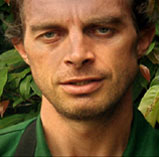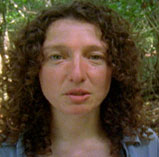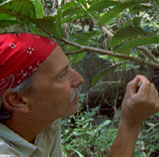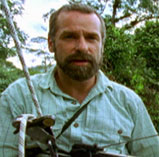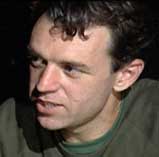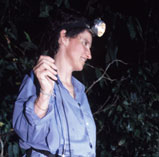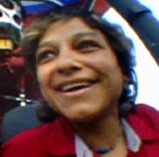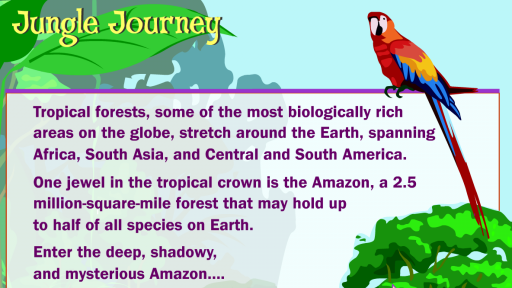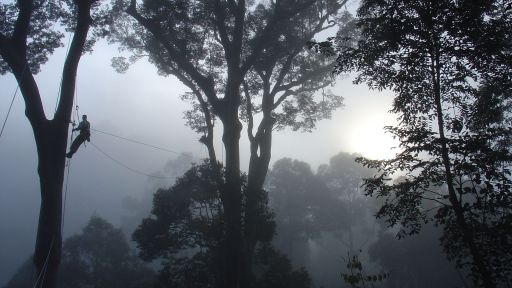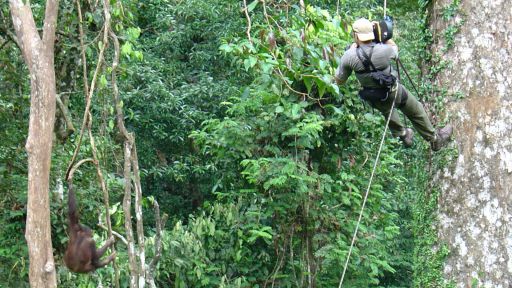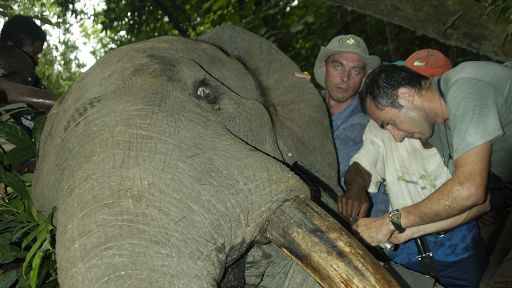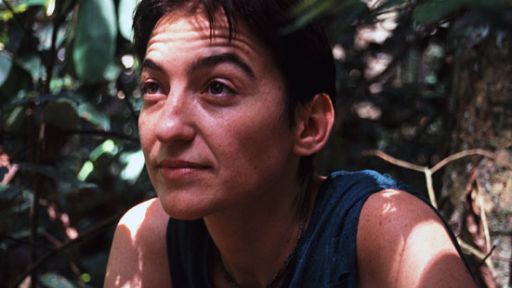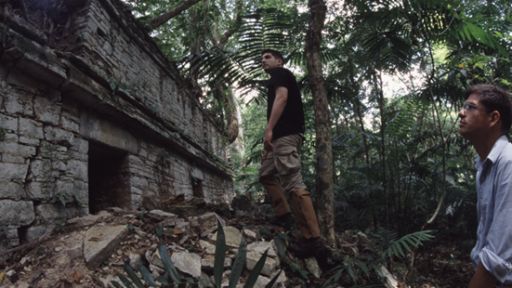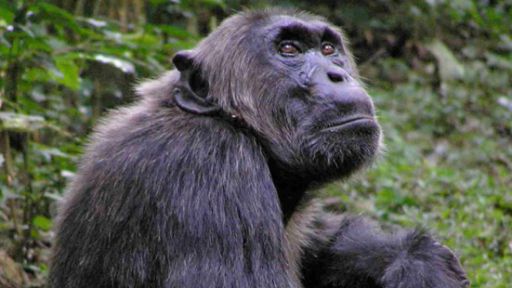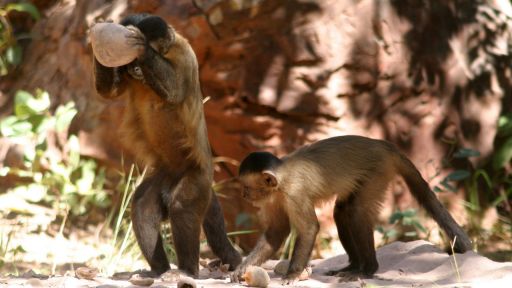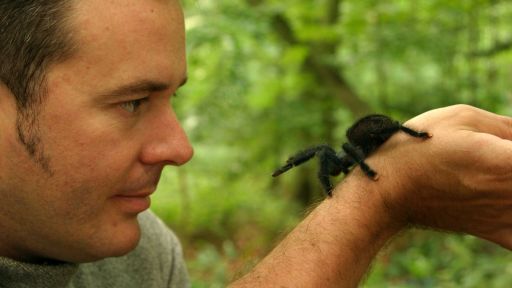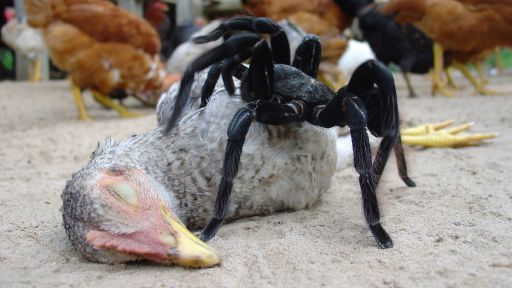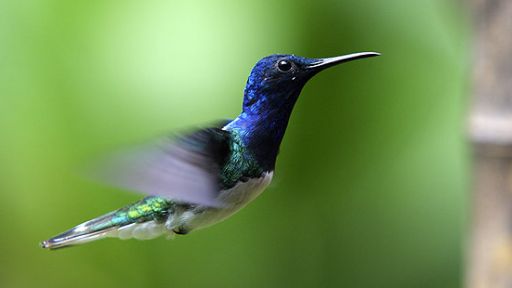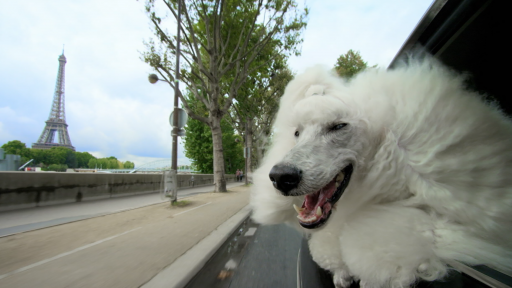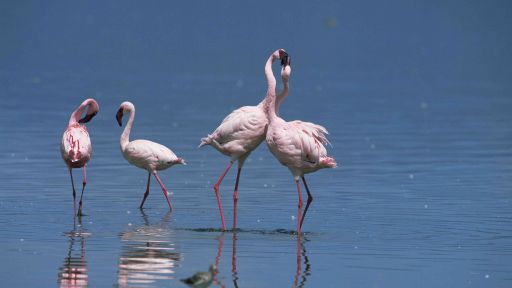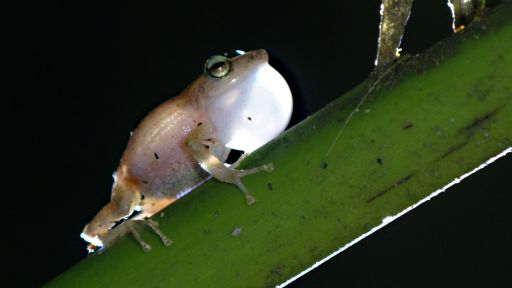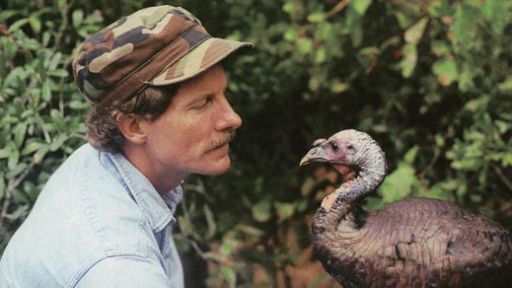Meet the scientists featured in Deep Jungle: New Frontiers.
Stephen Blake A self-proclaimed “working-class lad” from Dartford, England, Blake studied zoology at the University of London and earned his Ph.D. studying the migratory patterns of Nouabale-Ndoki forest elephants at the University of Edinburgh. He is known as an audacious biologist who thinks nothing of crossing wild forests clad only in sandals and a pair of shorts. Richard Ruggiero, who runs the elephant fund for the U.S. Fish and Wildlife Service and worked with Blake, compares him to nineteenth-century explorers: “He’s someone who could walk across Africa, turn around, and then be ready to go back again.” As part of his research, Blake has taken a series of what he calls “long walks” — foot surveys that start in Makao and follow a web of elephant trails up the Motaba and Mokala rivers to the Nouabale-Ndoki park’s northern border. These “walks” cross the park from north to south, then emerge from the headwater swamps of the Likouala aux Herbes River below the park’s southern border. Each trek covers about 150 miles and takes about a month.
The Forest Elephant GPS Telemetry Program was initiated in 1998 in response to the near complete lack of information on the home range requirements, ranging patterns, and seasonal movements of forest elephants in central African forests. Savannah elephants use thousands of square kilometers when their ranging is unrestricted, and if forest elephants have similarly large area requirements, range management and national park design must be developed on an adequate scale. Operational in three nations, six national parks, and across a wide variety of habitats, this study provides critical information to land-use planners, park managers, and governments. Our project is conducted in close collaboration with Save the Elephants, a Kenyan-based NGO that pioneered the use of GPS telemetry for savannah elephant research and conservation. When first approached by Wildlife Conservation Society (WCS), Save the Elephants saw the potential of using GPS telemetry for forest elephant conservation, and funded the first six collars deployed in central Africa. Save the Elephants continues to share its vast experience and expertise with the WCS team and has generously donated a total of 14 GPS telemetry collars.
“Biologists and conservation site managers from WCS are working with collaborators to deploy a total of over 30 GPS collars across critical elephant conservation areas in central African forests. We are proud of the part we play in what has become a truly collaborative field research and conservation venture. We have developed sampling plans, which meet scientific and management information requirements while respecting the prerequisite of minimizing risk to both elephants and humans. Field veterinarians from the WCS Field Vet Program supervise immobilization and ensure the highest standards of elephant handling during collar deployment. A pygmy tracking team, composed of former elephant hunters of the BaAka pygmies, has been trained over several years to help veterinarians approach and dart elephants efficiently — their lifetime experience being critical to success in the thick forest conditions of central Africa. The collars are programmed to collect GPS fixes every day, from between three to 24 times per day, with an expected battery life of about two years.”
Kimberly Bostwick Dr Kimberly S. Bostwick is Curator of Birds and Mammals at the Cornell University Museum of Vertebrates and a Research Associate in the Department of Ecology and Evolutionary Biology at Cornell University in New York.
Kim has analyzed high-speed video of manakins in their incredible courtship dances. Manakins are a group of tiny, colorful birds native to Latin America whose males have a curious way of impressing the females. Unlike most birds, they don’t sing — they clap. The video has revealed how they slap their wings together with remarkable speed (twice that of a hummingbird’s wings) and force to make the percussive snapping sounds that accompany their mating dances.
Phil DeVries Phil DeVries recently left his post as Director for the Center for Biodiversity Studies at the Milwaukee Public Museum and Adjunct Professor in Biology at the University of Wisconsin, Milwaukee to join the Department of Biological Sciences at the University of New Orleans. He studies species diversity, especially tropical butterfly communities, and the evolution of symbiotic associations between caterpillars and ants.
“My work includes two major books on the comparative biology of Costa Rican butterflies and over 70 separate research articles on a broad range of topics relevant to understanding insect diversity. Several significant awards, including a MacArthur Fellowship, a Dodge Foundation Fellowship, and a Guggenheim Fellowship have supported my research,” he says.
Phil has been involved in several television programs, including National Geographic’s BUG ATTACK and HEROES OF THE HIGH FRONTIER.
Roman Dial “Through the late ’70s, the ’80s, and most of the ’90s, I pursued a near obsession with Alaskan wilderness, while simultaneously nurturing an academic intrigue with ecology. I scaled rock and ice, skied glaciers, paddled rivers. I studied for four degrees, two in mathematics and two in biology. I learned to ‘packraft,’ ‘hellbike,’ and ‘glacier skate.’ Magazines and newspapers ran my hyperbole and exploits; peer-reviewed journals published my theory and data. For me the wild side feeds emotion and spirit; the analytic side feeds intellect and family.
“So now, as a professor at Alaska Pacific University, I feel blessed with an eclectic convergence. I can take a class to the tropics or the arctic, where we can lie on our bellies and watch musk ox[en] or dangle from ropes and watch monkeys. We can even move from tree to tree, collecting observations en route. We can paddle autumn rivers into Canada, or read Sir Robert May on chaos, Benoit Mandelbrot on fractals, and Per Bak on complexity. We can do wilderness and travel, math and statistics, nature and science, and we can find surprise and delight and challenge in it all.”
In DEEP JUNGLE, viewers watch Roman at work in the Bornean rainforest. Part of his research includes comparing different rainforests’ canopy structures and investigating how they relate to the animals that live there. Borneo’s extraordinarily tall and spacious canopy is home to more than half of the world’s gliding species — including flying frogs, lizards, snakes, geckos, squirrels, and lemurs.
Jeremy Holden Jeremy Holden originally traveled to Kerinci Seblat in Sumatra as a photographer in 1994, but an encounter with the mysterious Orang Pendek, a bipedal ape of Yeti-like reputation, changed his life. He and Debbie Martyr persuaded Fauna and Flora International (FFI, Britain’s oldest conservation organization) to fund a project to photo-trap the elusive animals of Kerinci Seblat.
In addition to allowing Jeremy to study animals like tigers and tapirs, the project revealed animals previously thought to be extinct (Schneider’s pitta) as well as those that had never been photographed before (the Sumatran rabbit).
Jeremy now lives six months of the year in Sumatra and spends the rest of the time photographing around the world for FFI. He is still trying to obtain the first ever photo of the Orang Pendek.
Elisabeth Kalko Known as the “Bat Woman of Panama,” Elisabeth Kalko is at the forefront of research on bats, the most diverse mammals in the tropics. Kalko is intrigued by bats’ hunting and feeding strategies and methods. She is also interested in studying bats’ indispensable roles in dispersing large quantities of seeds, pollinating flowers, and controlling insect populations.
Elisabeth Kalko is a staff scientist at the Smithsonian Tropical Research Institute and works at the University of Ulm in Germany, but also conducts research in Costa Rica, Venezuela, Brazil, Ivory Coast, and Europe. She uses a range of technology, from thermal and infrared imaging to laptops capable of analyzing the bats’ echolocation.
Nalini Nadkarni Nalini Nadkarni has been called “the queen of forest canopy research.” A fierce crusader for preserving the immeasurable biodiversity that resides in and depends upon the canopy, Dr. Nadkarni is a true pioneer in forest ecology. After two decades of climbing tall trees in Costa Rica, Papua New Guinea, and the Pacific Northwest, she has demonstrated that it is critical to actually be in the canopy in order to comprehend the interactions of the species that live there.
A faculty member at Evergreen State College in Olympia, Washington, Dr. Nadkarni focuses on the ecology of tropical and temperate forest canopies. In 1994 she co-founded the International Canopy Network, a not-for-profit organization devoted to facilitating communication among researchers, educators, and conservationists concerned with forest canopies. The organization conducts outreach programs through schools and works with policy makers on matters concerning forest conservation.
To enhance the field of canopy research as a whole, she worked with a team of fellow researchers and computer scientists to build a state-of-the-art database to manage, analyze, and disseminate data pertaining to multiple scientific disciplines.
Dr. Nadkarni has written more than 70 scientific papers and books documenting the roles that canopy-dwelling plants play in fostering diversity, providing resources for arboreal birds and mammals, and increasing the efficiency of nutrient cycling. In 2001, she received a Guggenheim Fellowship to explore the obstacles that scientists face in sharing their information with nonscientific audiences. Dr. Nadkarni’s creative, nontraditional methods for generating grassroots support — such as lobbying major league baseball player Mark McGwire to vouch for the connection between forests and baseball bats — have captured the interest of popular media. Her work has been featured in GLAMOUR magazine, an IMAX film, and the children’s magazine HIGHLIGHTS, as well as more traditional scientific publications. A rare combination of scientist, adventurer, and forest evangelist, Dr. Nadkarni has a message that is both thrilling and empowering.

